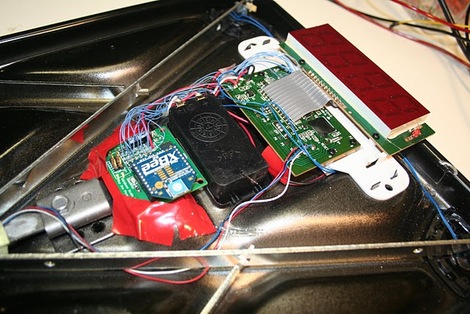
[FallDeaf] bought a Lol Shield, and after making all sorts of blinky displays, he thought to himself, “What in the world can I use this thing for?”
In a really slick fusion of hardware, software, and the power of the Internet, he has created what he calls, “Lol Shield Theatre”.
The idea goes something like this:
You visit his site, and create your own “movie” by drawing on his virtual Lol Shield. Add as many frames as you would like, set the frame rate, then submit your creation. From there, you can download an Arduino sketch that contains your entire animation so you can play it on your own Lol Shield. You can also visit his Lol Shield gallery, where you have the ability to watch, download, and vote on movie submissions from other visitors.
He has also provided the source code to drive your Lol Shield, as well as created an API through which you can stream the various animation feeds from his Lol Shield gallery directly to your Arduino via a USB cable.
Be sure to check out the video demo we have embedded below, and show off your pixel cinematography skills over in the theatre.
Continue reading “Lol Shield Theatre Brings Online Video To The Pixelated Screen”
















